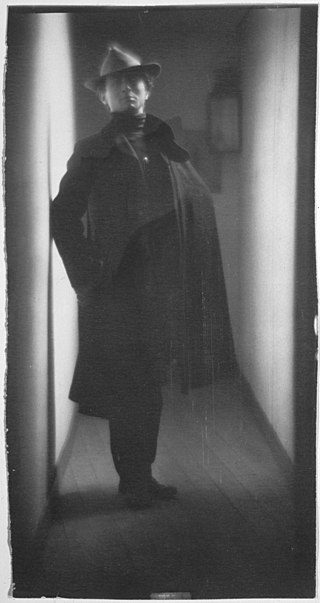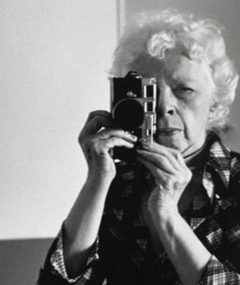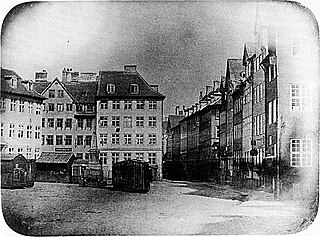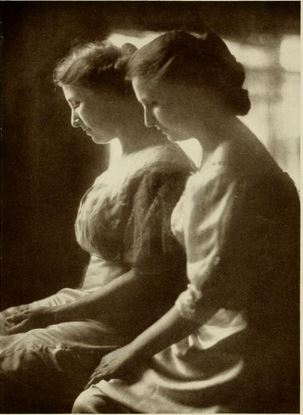
Edward Henry Weston was a 20th-century American photographer. He has been called "one of the most innovative and influential American photographers" and "one of the masters of 20th century photography." Over the course of his 40-year career Weston photographed an increasingly expansive set of subjects, including landscapes, still lifes, nudes, portraits, genre scenes and even whimsical parodies. It is said that he developed a "quintessentially American, and especially Californian, approach to modern photography" because of his focus on the people and places of the American West. In 1937 Weston was the first photographer to receive a Guggenheim Fellowship, and over the next two years he produced nearly 1,400 negatives using his 8 × 10 view camera. Some of his most famous photographs were taken of the trees and rocks at Point Lobos, California, near where he lived for many years.

Edward Jean Steichen was a Luxembourgish American photographer, painter, and curator, renowned as one of the most prolific and influential figures in the history of photography.

Richard Avedon was an American fashion and portrait photographer. He worked for Harper's Bazaar, Vogue and Elle specializing in capturing movement in still pictures of fashion, theater and dance. An obituary published in The New York Times said that "his fashion and portrait photographs helped define America's image of style, beauty and culture for the last half-century".

Yevonde Philone Middleton was an English photographer, who pioneered the use of colour in portrait photography. She used the professional name Madame Yevonde in a career lasting over 60 years.
Grace Robertson was a British photographer who worked as a photojournalist, and published in Picture Post and Life. Her photographic series, including "Mother's Day Off" (1954) and "Childbirth" (1955), mainly recorded ordinary women in postwar Britain.

Lisette Model was an Austrian-born American photographer primarily known for the frank humanism of her street photography.

Samuel Joseph Haskins, was a British photographer, born and raised in South Africa. He started his career in Johannesburg and moved to London in 1968. Haskins is best known for his contribution to in-camera image montage, Haskins Posters (1973) and the 1960's figure photography trilogy Five Girls (book) (1962), Cowboy Kate & Other Stories (1964) and November Girl (book) (1967), plus an ode to sub-saharan tribal Africa "African Image (book) (1967).

Adelaide Hanscom Leeson was an early 20th-century artist and photographer who published some of the first books using photography to illustrate literary works.

Sonya Noskowiak was a 20th-century German-American photographer and member of the San Francisco photography collective Group f/64 that included Ansel Adams and Edward Weston. She is considered an important figure in one of the great photographic movements of the twewntieth century. Throughout her career, Noskowiak photographed landscapes, still lifes, and portraits. Her most well-known, though unacknowledged, portraits are of the author John Steinbeck. In 1936, Noskowiak was awarded a prize at the annual exhibition of the San Francisco Society of Women Artists. She was also represented in the San Francisco Museum of Art’s “Scenes from San Francisco” exhibit in 1939. Ten years before her death, Noskowiak's work was included in a WPA exhibition at the Oakland Museum in Oakland, California.
Clara Sipprell was a Canadian-born, early 20th-century photographer who lived most of her life in the United States. She was well known for her pictorial landscapes and for portraits of many famous actors, artists, writers and scientists. Her photograph New York City, Old and New was the first artwork by a female artist acquired for the collection of the Museum of Modern Art, New York.
Edmund Rudolph Teske was a 20th-century American photographer who combined a career of taking portraits of artists, musicians and entertainers with a prolific output of experimental photography. His use of techniques like: combined prints, montages and solarizations led to "often romantic and mysterious images". Although he exhibited extensively and was well known within artistic photography circles during his lifetime, his work was not widely known by the public. He has been called "one of the forgotten greats of American photography."
Elizabeth Buehrmann was born June 13, 1886, in Cape Girardeau, Missouri. Buehrmann was an American photographer and artist who was one of the pioneers of taking formal portraits of people in their own homes rather than in a studio.

In Denmark, photography has developed from strong participation and interest in the very beginnings of the art in 1839 to the success of a considerable number of Danes in the world of photography today.

The participation of women in photography goes back to the very origins of the process. Several of the earliest women photographers, most of whom were from Britain or France, were married to male pioneers or had close relationships with their families. It was above all in northern Europe that women first entered the business of photography, opening studios in Denmark, France, Germany, and Sweden from the 1840s, while it was in Britain that women from well-to-do families developed photography as an art in the late 1850s. Not until the 1890s, did the first studios run by women open in New York City.
Adelaide Hiebel (1885–1965) was an artist and illustrator who worked for the Gerlach Barklow Co. in Joliet, Illinois, a manufacturer of art calendars. Hiebel preferred to work in pastels, and was known for her photographic detail and portraits of women, especially "women and dogs, mothers with infants, infant portraits and small children in cute situations."
Kathy Grove is an American conceptual feminist photographer. As a professional photo retoucher for fashion magazines, Grove became familiar with airbrushing and photo manipulation techniques in that industry. Her work uses those skills to remove subjects from iconic works, or to alter their appearance. Grove wrote that this practice is intended to "portray women as they have been regarded throughout history, invisible and inaudible."[2] Her photo series, The Other Series, includes reproductions of canonical paintings in Western art with the feminine subjects removed.
Joyce Neimanas is an American artist known for her unorthodox approach to photography and mixed-media works.

Emme Gerhard (1872–1946) and Mayme Gerhard (1876–1955), the Gerhard Sisters, were among the first women photographers to establish a studio in St. Louis, Missouri, in 1903. At the time newspapers and magazines rarely hired women as staff photographers to capture late breaking news.
Lisa Saltzman is an American photographer known for both her commercial and fine art photography.











